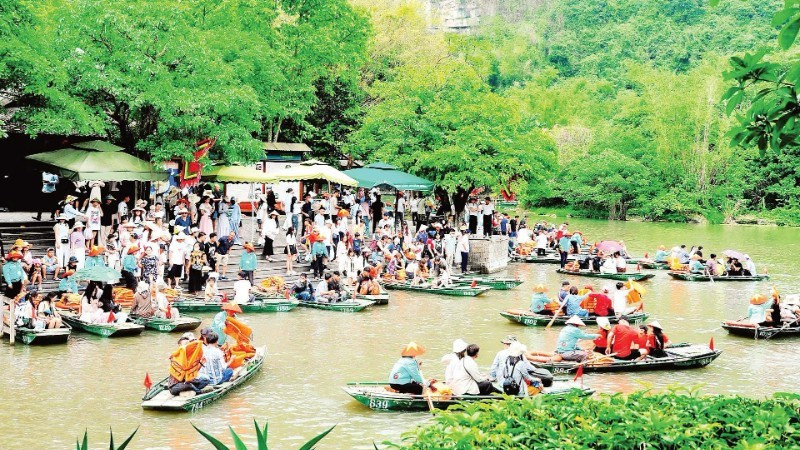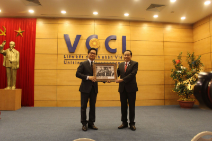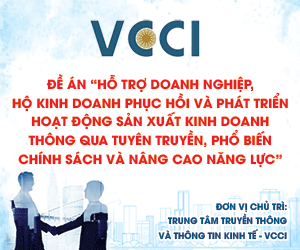Merging provinces and cities creates new growth drivers for tourism industry
After the mergers of provinces and cities, the tourism industry is facing the need to “redraw the map” — restructuring the development space, products and brands, and creating new growth drivers.

According to data from the Viet Nam National Administration of Tourism, in the first nine months of 2025, Viet Nam tourism recorded impressive figures: more than 15.4 million international visitors; 119 million domestic visitors; and an estimated at 794 trillion VND in total revenue from tourists. After the provinces and cities merged, the tourism industry faced the need to “redraw the map” — restructuring the development space, products and brands, creating new growth drivers.
After the merger of the three provinces of Ninh Binh (old), Ha Nam, and Nam Dinh, Ninh Binh Province (new) became a growth pole in the Red River Delta. In the first nine months of 2025, the province welcomed more than 16.7 million visitors (more than 1.62 million international visitors), with estimated revenue of nearly 17.9 trillion VND, a sharp increase over the same period in 2024.
Currently, the province has completed the review and reorganisation of the tourism space with an international tourism centre, nine tourism clusters and three strategic spaces, including: heritage-culture-spirituality; ecology-sea-estuary; craft villages-creative community. On that basis, the province designed three linked tourism routes: northern route — Bai Dinh-Van Long-Tam Chuc-Huong Pagoda-Duy Tien; central route — Hoa Lu-Trang An-Phu Day-Tran Temple-Keo Pagoda-Co Le; and coastal route — Kim Son-Phat Diem-Hai Thinh-Hai Tien-Giao Ninh-Giao Thuy.
This is clear evidence that the “new tourism map” is not only a change in boundaries but also a restructuring of products and spaces. However, Ninh Binh does not deny the challenges that the provincial tourism industry faces after the merger.
Bui Van Manh, Director of the Department of Tourism, shared that the changes in administrative boundaries after the merger make it difficult to update digital maps, smart tourism maps, and integrate destinations and tourism service establishments. The department has been closely coordinating with sectors, localities, media agencies, and travel businesses to ensure consistency and synchronisation from maps to product and service systems. When completed, the new tourism map will be an important foundation, helping Ninh Binh enhance its position as an attractive destination on the national tourism map, while promoting sustainable regional connectivity.
Changes in administrative boundaries after the merger have made it difficult to update digital maps, smart tourism maps, and integrate destinations and tourism service establishments. The department has been closely coordinating with sectors, localities, media agencies, and travel businesses to ensure consistency and synchronisation from maps to product and service systems. When completed, the new tourism map will be an important foundation, helping Ninh Binh enhance its position as an attractive destination on the national tourism map, while promoting sustainable regional connectivity.
Bui Van Manh, Director of Ninh Binh Department of Tourism
In the South, Ho Chi Minh City, after merging with the two provinces of Binh Duong and Ba Ria-Vung Tau, has seen impressive growth in both scale and tourism products. In the past nine months, Ho Chi Minh City welcomed more than 5.8 million international visitors and more than 29.1 million domestic visitors, with total revenue estimated at over 184.6 trillion VND.
Since the merger, the Ho Chi Minh City Department of Tourism has focused on coordinating with departments, branches, localities and businesses to survey, design and develop many routes, destinations and typical tourism products; reposition products and build orientations for new product development; focus on developing night tourism associated with piloting public-private partnership mechanisms in the fields of culture and sports such as night museum tours, art performances, reviewing to develop waterway tourism. These are creative solutions to exploit the advantages after the merger, creating great attraction for both international and domestic tourist markets of the city named after Uncle Ho.
After the two-tier local government model came into operation nationwide, up to now, Quang Ninh Province has emerged as a leading locality with a methodical approach, developing tourism in accordance with the arrangement of administrative boundaries. According to the report of the Department of Culture, Sports and Tourism, in the first nine months of 2025, Quang Ninh has welcomed 17.11 million tourists (more than 3.2 million of whom were international visitors), while total revenue reached 44.25 trillion VND. According to Nguyen Lam Nguyen, Deputy Director of the Department of Culture, Sports and Tourism of Quang Ninh Province, the rearrangement of the province’s administrative units did not cause many fluctuations in tourism resources in the province.
However, to ensure that each area after the merger is properly assessed for potential, has appropriate exploitation orientation, and is associated with the specific strengths of each commune, ward, and special zone, the Department of Culture, Sports and Tourism of Quang Ninh Province issued Plan 289/KH-SVHTTDL, dated August 18, 2025, to survey and evaluate infrastructure and services in all tourist areas and spots, and at the same time clean data and digitise tourism resources to integrate into the electronic map system. “This is the basis for the province to have a new, modern, and intuitive tourist map, serving the management and promotion of destinations; at the same time, it is also a factor that helps improve the quality of services and the image of Quang Ninh destinations,” Nguyen affirmed.
At the same time, the province maintains its attraction with a series of cultural-sports-tourism events such as: Ha Long Carnival 2025, Hot Air Balloon Festival, Ha Long Marathon, and Ultra Trail Yen Tu. Such activities are organised regularly, showing that the competitiveness of a destination does not only come from changing administrative boundaries, but also from the capacity to manage data, organise events, and renew the tourist experience.
From the above practices, it can be seen that localities are making efforts to “redraw the tourism map” to adapt after the merger. However, this is not only about adjusting administrative boundaries, changing names, but also a comprehensive restructuring process, from data, products, infrastructure to people. Ha Van Sieu, Deputy Director of the Viet Nam National Administration of Tourism, emphasised that if administrative boundaries are changed but the old way of doing things is still maintained, the merger is just “putting new clothes on old thinking”. The core is to innovate planning thinking, locate corridors, connecting axes, reform institutions and mobilise maximum resources (from internal to external forces) to create momentum for development.
If administrative boundaries are changed but the old way of doing things is maintained, the merger is just “putting new clothes on old thinking”. The core is to innovate planning thinking, locate corridors, connecting axes, reform institutions and mobilise maximum resources (from internal to external forces) to create momentum for development.
Ha Van Sieu, Deputy Director of Viet Nam National Administration of Tourism
Phung Quang Thang, Vice Chairman of Viet Nam Tourism Association, noted: “Managing destinations after mergers requires higher capacity. Another important issue is product synchronisation, because if in one place the quality is good, in another place in the same province it is weak, it will create a bad mentality for tourists. Tourism brands must be built on quality and experience, not just on name.”
Given the current situation, the solution for the coming period needs to be synchronous in the pillars: digitalising data, restructuring product space, investing in infrastructure, enhancing human resources, and establishing a regional destination management mechanism. This is also the spirit of Decision No.509/QD-TTg approving the Tourism System Planning for the 2021-2030 period, with a vision to 2045, and Decision No.382/QD-TTg of the Prime Minister promulgating the plan to implement the Tourism System Planning for the 2021-2030 period, with a vision to 2045. If implemented well, the tourism industry can completely achieve the goal of welcoming at least 25 million international visitors and 150 million domestic visitors in 2025, while creating a foundation for Viet Nam to become an attractive, sustainable destination with regional and international stature.








